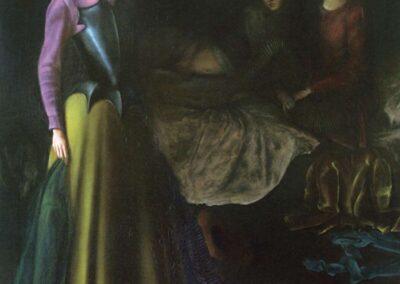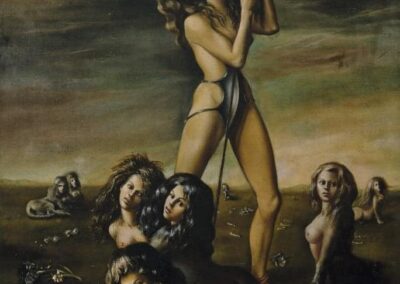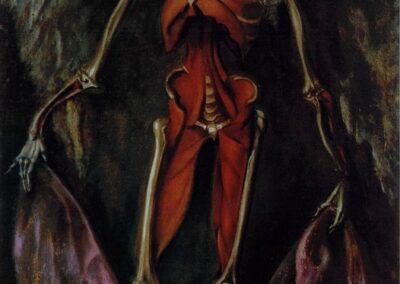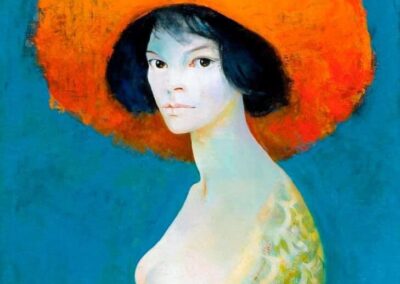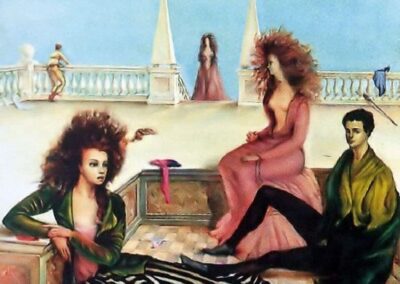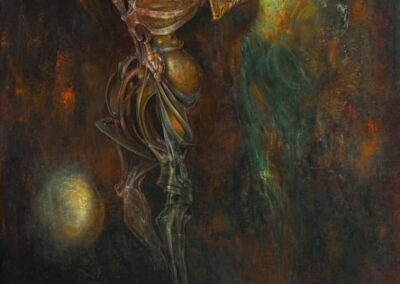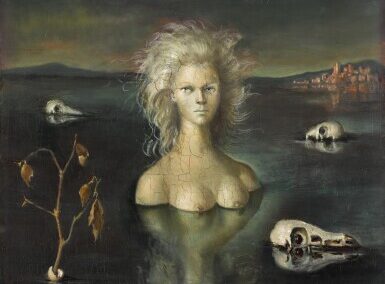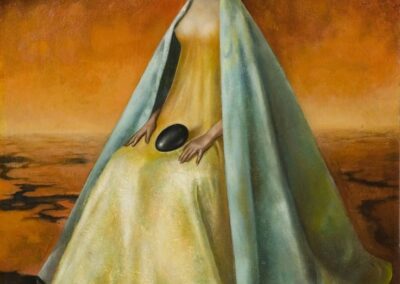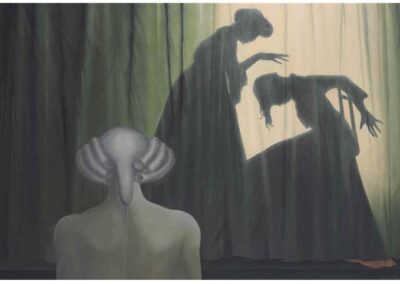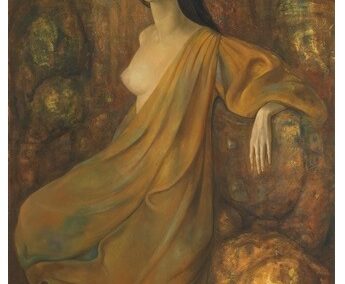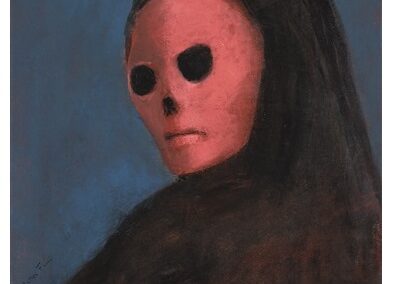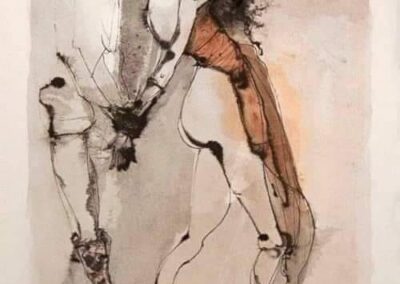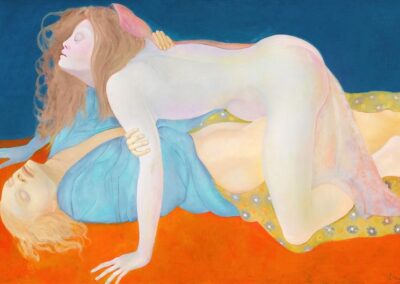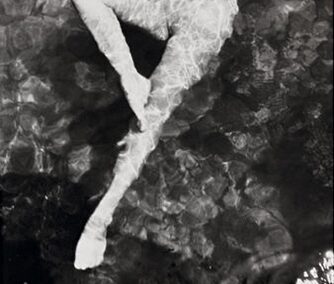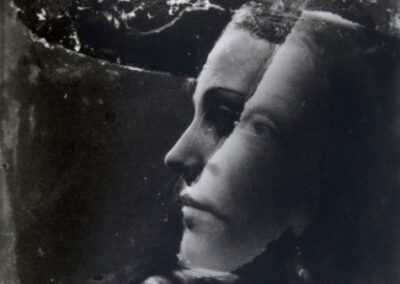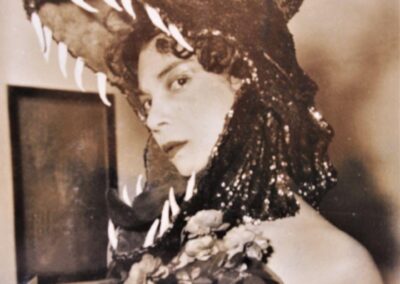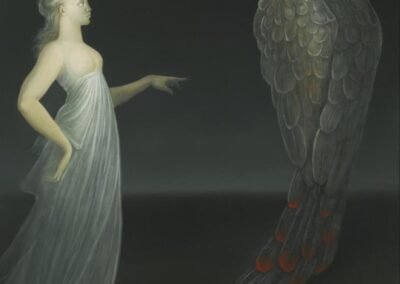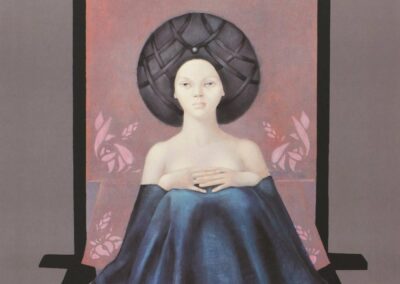Our next Artist You Need To Know is Leonor Fini (1907 – 1996).
She was an Argentine – Italian painter, designer, illustrator, and author and among the most significant Surrealist artists of her time. Fini’s work is often immediately recognizable not just for her unique painting style but also for her themes of strong and erotically charged female figures.
From The Art Story : “Throughout a long career, the canvases of Leonor Fini’s journey between the pains of despair and the serenity of enlightenment but remain polished with eroticism at every extreme. Driven by passion, liberty, and sexual experimentation, she was arguably the most rebellious, theatrical, and autonomous of the female Surrealists.”
“I paint things that don’t exist, and that I’d like to see.”
Fini was born in Buenos Aires, Argentina, to parents of Italian heritage. Her father was wealthy but an unpleasant, domineering religious zealot whose behaviour drove his wife to return to Trieste (her birthplace) less than two years after Leonor’s birth. Fini grew up in Trieste (being expelled from numerous schools for her ‘rebellious’ nature) : her father – being a rabid catholic – refused to grant a divorce, and Fini’s early life was defined by custody battles that forced them to engage in subterfuge (often including disguises). An Italian court in 1919 granted Malvina (Leonor’s mother) a divorce in 1919, allowing their lives to settle : but in her early teens, FIni was afflicted with an eye disease that required her to wear bandages on her eyes to speed healing. Historian Jane Hoodless asserts Fine “later recalled that living in the dark had given her the opportunity to form and visualize elaborate images from her imagination.”
Fini would never seek out any space of ‘formal’ artistic training, but growing up and experiencing some of the finest of Italian Renaissance and Mannerist artworks shaped her ideas and style from an early age. She also took an early interest in ‘morbid’ subject matter : part of her self education as an artist included drawing cadavers at the local morgue.
Moving to Milan when she was 17, Fini began exhibiting her work immediately, earning commissions to paint various members of the more elite social circles. She had her first solo show at the Galerie Barbaroux in 1929: and Fini would relocate to Paris in 1931 when she was 24.
Fini soon became part of an artistic circle that included her friends Carlo Carrà and Giorgio de Chirico, and they mutually influenced each other in their painting and practice. This informal group also included Paul Éluard, Max Ernst, Georges Bataille, Henri Cartier-Bresson, André Pieyre de Mandiargues, and Salvador Dalí.
She was sometimes considered an ‘eccentric’; cross dressing, relationships with women as well as men and her nearly two dozen cats (whom she regularly dined with, like dinner guests) became hallmarks of Fini’s persona that would continue her entire life.
“The imagination feeds on images it sees on its path. Here are some of the journeys mine has taken.”
In 1936, Fini had a her first major exhibition at New York’s Julian Levey Gallery : she was also represented in Peggy Guggenheim’s Exhibition by 31 Women at the Art of the Century Gallery in NYC in 1943.
Fini was associated with the Surrealists (often showing with them in the post WW II period) but was never fully part of the group, as she had a unique style (both in her artwork and life) and offered that one of the leaders of that group André “Breton seemed to me to expect devotion, like a pope, and wanted me to become a mouton dans sa troupe [sheep in his troop].”
She was not awarded the recognition she deserved in the early part of her career – a common story, when considering female artists of that period, and especially among the Surrealists – but in the latter few decades of her life she garnered the praise and acknowledgement of her importance in not just the trope of Surrealism but also in twentieth century art.
From here : Leonor Fini’s “paintings feature dreamlike scenes in which dominant women and passive men undercut traditional notions of sex and gender. Nude or heavily costumed, Fini’s characters embrace humor, eroticism, and mythological symbolism.”
Fini is also known as an illustrator of books, like Histoire d’O, and had a successful career as a theater designer, creating award-winning set designs and costumes. She contributed set and costume work to many productions, including George Balanchine’s ballet Le Palais de cristal, Jean Anouilh’s ballet Les Demoiselles de la nuit, Jean Genet’s play The Maids, and Federico Fellini’s film 8 1/2.
She also wrote three novels: Rogomelec, Moumour, and Contes pour enfants velu et Oneiropompe.
Leonor Fini led a performative life (often dressing in a manner that matched the characters in her paintings) and many photographers captured wonderful images of her. We’re sharing a few below, as her life and art were intertwined. In fact, one of Henri Cartier-Bresson’s most well known images is of Fini (the first below, which is part of a series where her interest in eroticism from a female ‘position’ clearly shapes Cartier – Bresson’s ‘eye’), and her role as model and muse surely helped define the work.
“I have always loved, and lived, my own theatre.”
Fini died on January 18, 1996 in Paris at the age of 89, but she was painting nearly up to her death, making no concession to her age.
“I always imagined I would have a life very different from the one that was imagined for me, but I understood from a very early time that I would have to revolt in order to make that life. Now I am convinced that in any creativity there exists this element of revolt.”
Her works can be found in numerous collections both public and private, including the Metropolitan Museum of Art in New York, the Centre Georges Pompidou in Paris, and the Tate Modern in London.
The words of Agnès de la Beaumelle (writing for the fine site AWARE) : Fini “explored the imaginary visions dictated by her fantasies alone: women-sphinxes, ephebes, and chimeras populate scenes where sacred rituals mix with the erotic, in an atmosphere which is incandescent and gloomy by turns, and always enigmatic. Here, woman commands a sovereign and aloof beauty, which is almost evil; Nature is but a disturbing, almost morbid, proliferation of plants.”
Much more about her life, legacy and artwork can be seen here.


